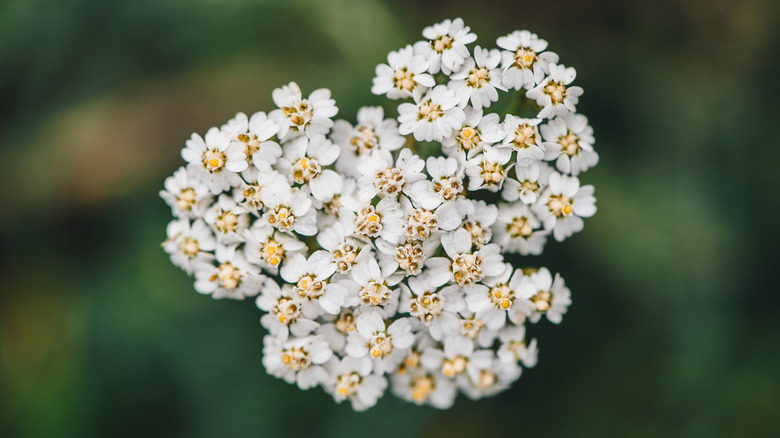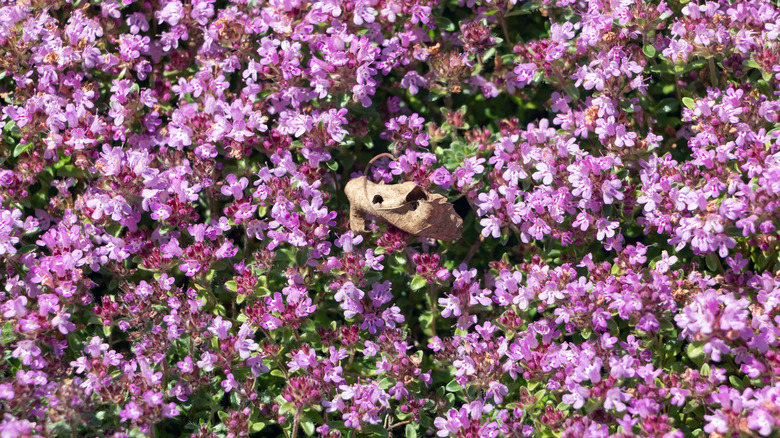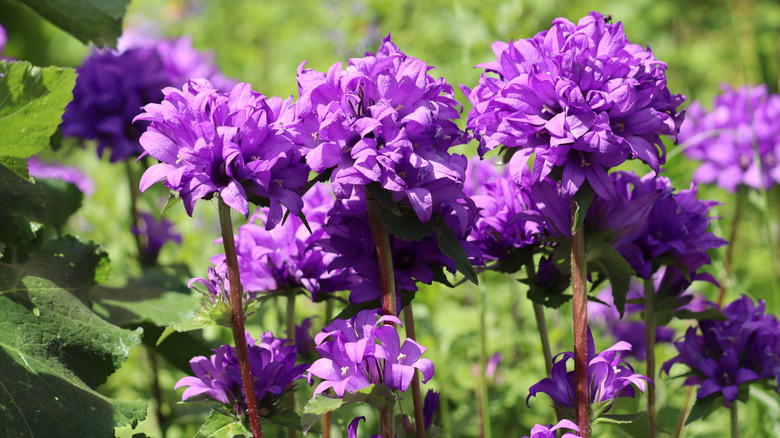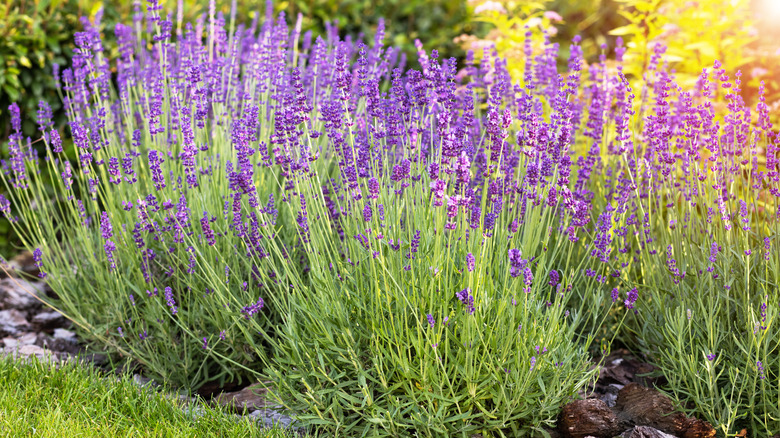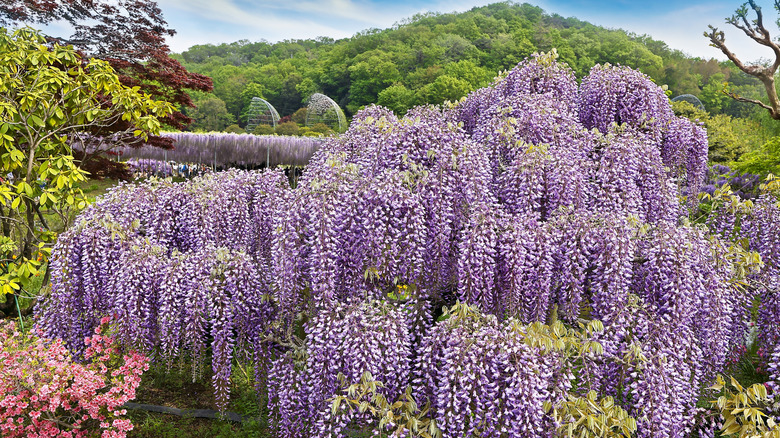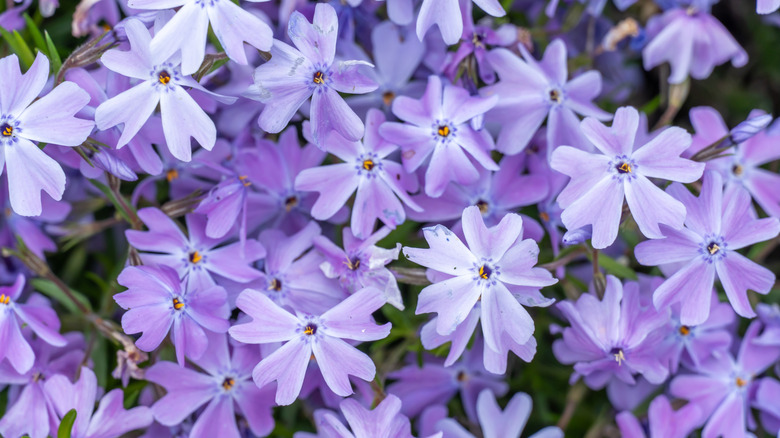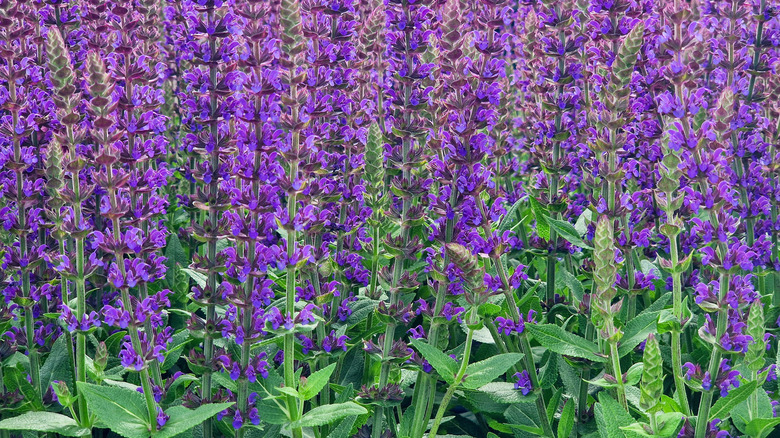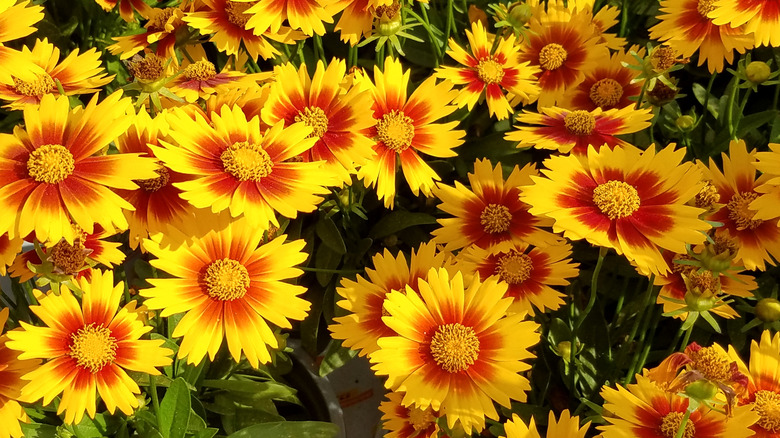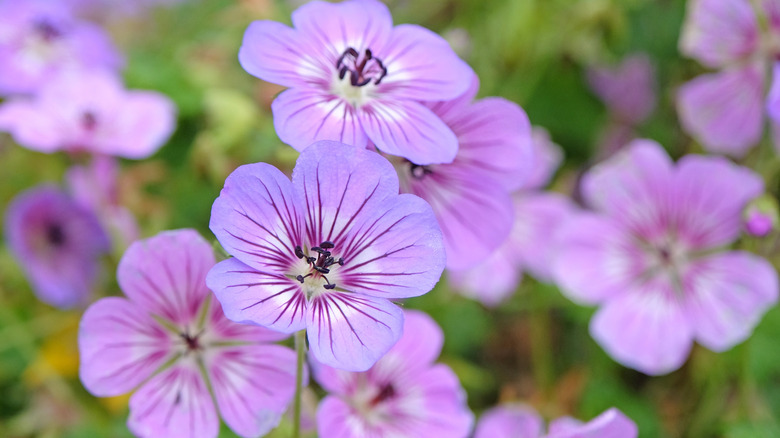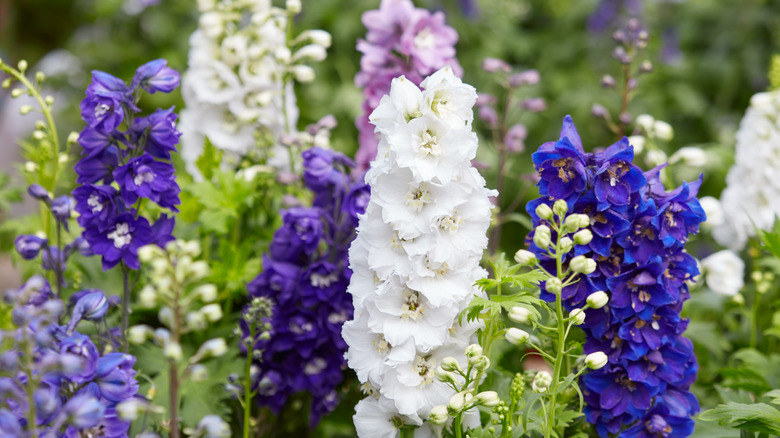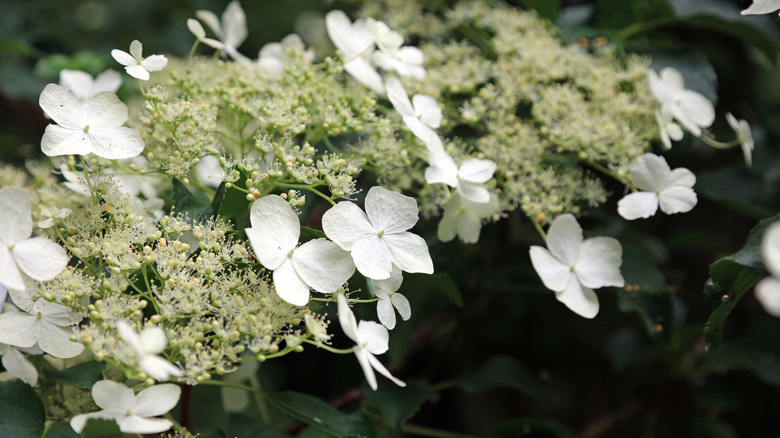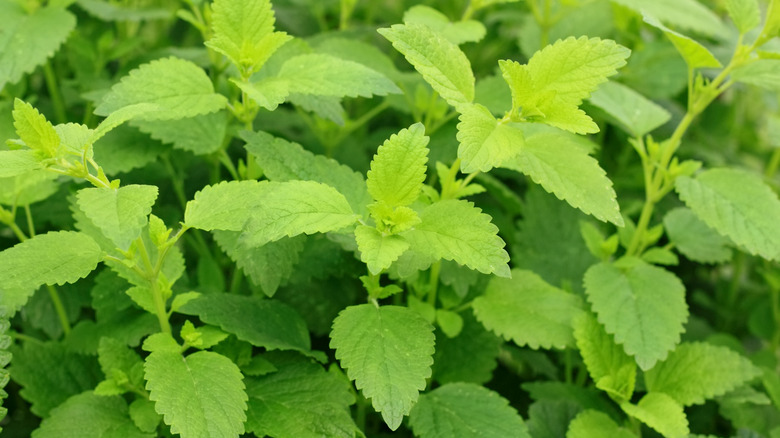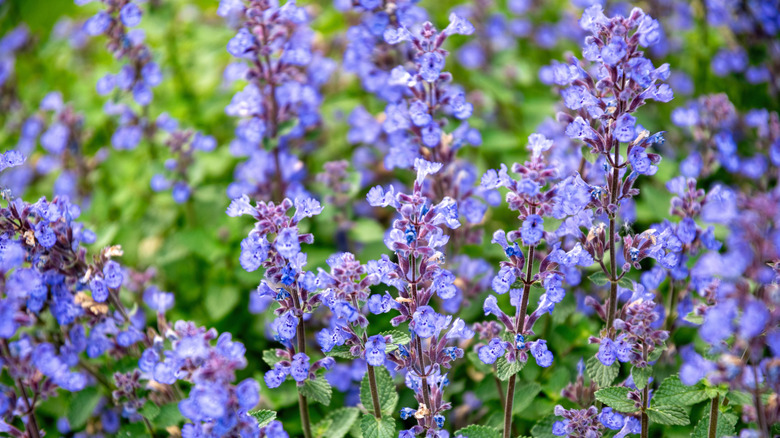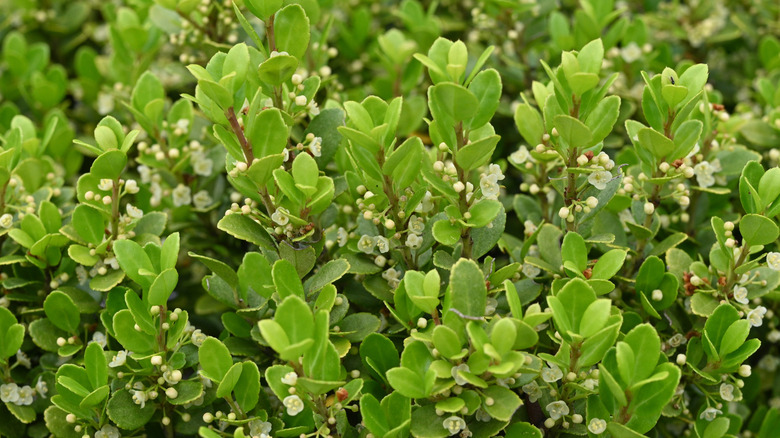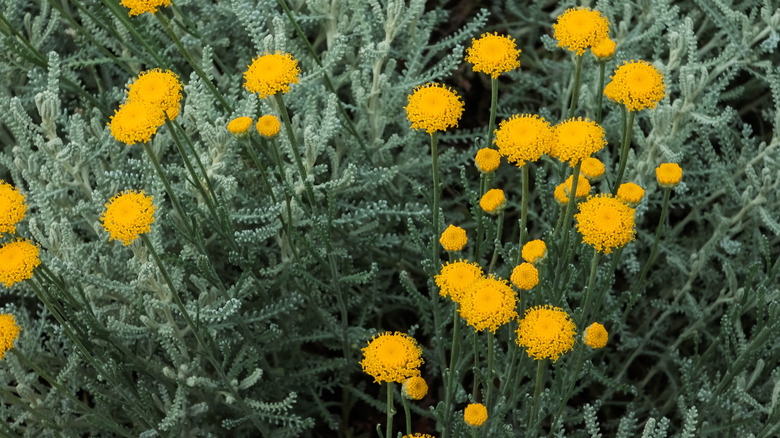15 Perennials You Should Prune In August To Enjoy Another Wave Of Blooms
August sees the peak of many perennials, with flowers starting to wilt and look a little tired as the month progresses. Spring and early summer usually sees the vast majority of blooms, and you might think that late August is the time to just let your perennials fall into dormancy. And whilst that is an option, there are plenty of tips and tricks to keep your perennial garden looking fresh in August. If you're looking to encourage your perennials to bloom again, the solution is to cut them back and encourage new growth following proper pruning techniques.
Many perennials will reward you with a second burst of flowers if you undertake some careful pruning. In general, most pruning takes place in the fall or winter when plants are dormant, as this will give them time to recover before spring growth. Amongst the mistakes to avoid when pruning your plants is timing cut backs incorrectly, as this can ruin the next year's flowering season. However, there are some perennials that will actually benefit from pruning in August, and in this guide, we'll look into those in more detail. Do be aware, though, that a second wave of blooms is likely to yield smaller flowers and less volume, although it will still add to the beauty of your garden.
Common yarrow
Beautiful Achillia millefolium (or common yarrow) produces pretty flowers in shades of yellow and white, reaching up to 3 feet in height. But the long, thin stalks can become floppy through August. Cut back the stalks to their lowest set of leaves to prompt new growth, and deadhead any dead blooms that have already faded. It's important to remember that yarrow can become invasive if not properly maintained and care should be taken to control the spread of the plant. Make sure you know how to divide and control yarrow so it doesn't take over your garden.
Thyme
Thyme (Thymus vulgaris) is best known as a herb, but it can also provide fragrant ground cover that helps to deter pests. However, if it's left uncut for too long, it can begin to look scraggly. A trim in August will help to reduce its woody growth and encourage new flower growth. For the plant to continue thriving, never cut into bare wood — it's recommended to always leave around 5 inches of growth. It's also wise to avoid pruning during extremely hot weather as this can stress the plant. Choose a mild day or trim early in the morning.
Campanula
There are multiple varieties of campanula, but clustered bellflower (Campanula glomerata) is one of the most forgiving, growing well in either full sun or partial shade. If you've already established campanula in your garden, you probably know everything you should know before planting. Campanula flowering may well recur without any interference, but if the plant is looking a little tired, cut down the stems by half and try to create a round and shapely bush. This will help flowers to be prominently displayed when the campanula blooms again.
Lavender
Lavender (Lavandula) comes in many varieties, with English and French lavender being two of the most popular cultivars. Like thyme above, lavender can become woody and one of the mistakes you want to avoid when growing it is not keeping the plant pruned and trimmed. Tough as it is to bring yourself to trim off the gorgeous smelling flowers and buds, employing a little pruning in August will help to prolong the life of your lavender bush. You'll only need to take off a few inches to help keep your plant looking bushy and healthy.
Wisteria
There are few sights more majestic sights than wisteria gently climbing around a house or pagoda in the garden. But there are some fast-spreading invasive wisteria varieties to steer clear of if you don't want the plant to completely take over and potentially strangle trees. Instead, choose American wisteria (Wisteria frutescens) and make sure you prune it in August to cut back any long new shoots. Trimming these areas back not only helps buds to form, but will also allow you better control where you want the next year's flowers to hang.
Garden phlox
Garden phlox (Phlox paniculata) is easily recognizable with its beautiful star-shaped flowers in a variety of colors including pink, purple, red, and white. Although this is a low maintenance perennial, knowing how to care for phlox will reward you with plants that can grow as tall as 5 feet, so a little pruning when required is advisable. You'll want to look for faded flowers and trim them back to where they budded from the main stalk. But don't throw these cuttings away — they can be used to propagate new plants.
Salvia
Salvia is more commonly known as sage, an incredibly versatile herb with a variety of uses. But salvia also produces long tubular spires of flowers, most commonly found in shades of blue and purple. Enjoying full sun or partial shade, salvia actually blooms later than many perennials, so August is the mid-point of its flowering cycle. If you want to know how to prune saliva for endless blooms all summer, it's recommended that you deadhead initially. If pruning, cut off any dead flowers off at the point where new growth has branched off from the main steam.
Coreopsis
There are a number of coreopsis varieties but Coreopsis auriculata, more commonly known as mouse-eared tickseed, is a colorful low-maintenance perennial that will thrive in your poor and rocky soil. Producing daisy-like blooms in golden yellow tones, these gorgeous flowers add vibrancy to any garden. To keep coreopsis blooming for longer, you'll need to cut in waves, as the flowers won't all start to fade at the same time. The easiest way to prune is to cut the stalks down to just above the ground, but you can also just cut down to the first fresh leaf nodes.
Cranesbill geranium
There are few things tougher than geraniums once they're established, with the plants tolerating full sun, partial shade, and even some drought once they've been established. Cranesbill geraniums are popular plants due to the wide range of colors and the long flowering season that can see them keep going well into early fall. But to maintain growth, you'll need to be brave with your pruning. Start by cutting back a third of each branch but, if that doesn't stimulate new growth, you should cut the stalks back to the ground.
Delphinium
The Delphinium genus, more commonly referred to as larkspur, contains more than 500 species. This stunning plant will help to attract hummingbirds to your garden, along with a variety of butterflies. Most commonly producing blue flowers, these tall and majestic plants also come in white, pink and purple varieties. With multilayered petals, there are few plants that produce such a dramatic blanket of flowers as the delphinium. The first wave of flowers will have died off by August, so remove the flower spire and trim the plant down to the next flower shoot to help stimulate growth.
Climbing hydrangea
Hydrangea anomala, known more commonly as climbing hydrangea is, as the name suggests, a fantastic climber that can cover almost any structure. But this beautiful variety of hydrangea can also grow as a garden ground cover, spreading horizontally to give a lush and full look. With a shrub-like feel, this plant produces abundant white flowers alongside vibrant green foliage. Trim back the dead and brown flowers in August to help encourage new growth — remember that this could be labor-intensive job, especially with an established plant. Annual pruning is essential to stop the plants becoming too weighty and heavy.
Lemon balm
Lemon balm (Melissa officinalis) is part of the mint family, and although generally grown as part of a herb garden, its vivacious bushy leaves also make it an excellent choice for borders. This easy to grow herb can take the heat and thrive all summer long, tolerating drought and poor soils once it's established. Lemon balm is a fast grower, and no matter how much you pick fresh, you're unlikely to out pick its growth. Instead, let the plant bloom, and then once the flowers start dying, prune around two thirds off the top of the plant.
Catmint
Nepeta, known commonly as catmint, is an underrated plant that many people just associate with the strong scent that attracts cats. And whilst it's highly entertaining to watch our feline friends roll around, this pretty plant will add to any garden with its blue, purple, or white flowers and silvery gray leaves. This fragrant lavender look-alike can withstand harsher conditions and grows well in part shade and dry soil. Once the first set of blooms have started to die down, you can prune your catmint by simply removing the dead seed heads.
Japanese holly
As the name suggests, Japanese holly (Ilex crenata) is a native of Japan and East Asia. Producing small white flowers with a pale green center, the plant also produces fruit that ripens in early fall and persists into spring. This sturdy plant makes for attractive hedges and borders, but can even work as topiary. Although dense, it can be a slow grower but is also prone to looking a bit wild if not pruned. In cooler climates, it's important to prune at least two months before any frosts, meaning August will be the time to trim and shape.
Santolina
Santolina chamaecyparissus, known more commonly as just santolina or cotton lavender, is a drought resistant herb that you can grow for a thriving garden. This eye-catching herb produces pretty yellow flowers resembling cotton buds along with silvery gray foliage. Once the plant has been established for several years, pruning twice a year is essential to avoid it flopping open and revealing bare, woody stems. In August, wait until flowering has finished, and then trim the stems down as low as possible to encourage new growth, cleaning up the foliage a little at the same time.

